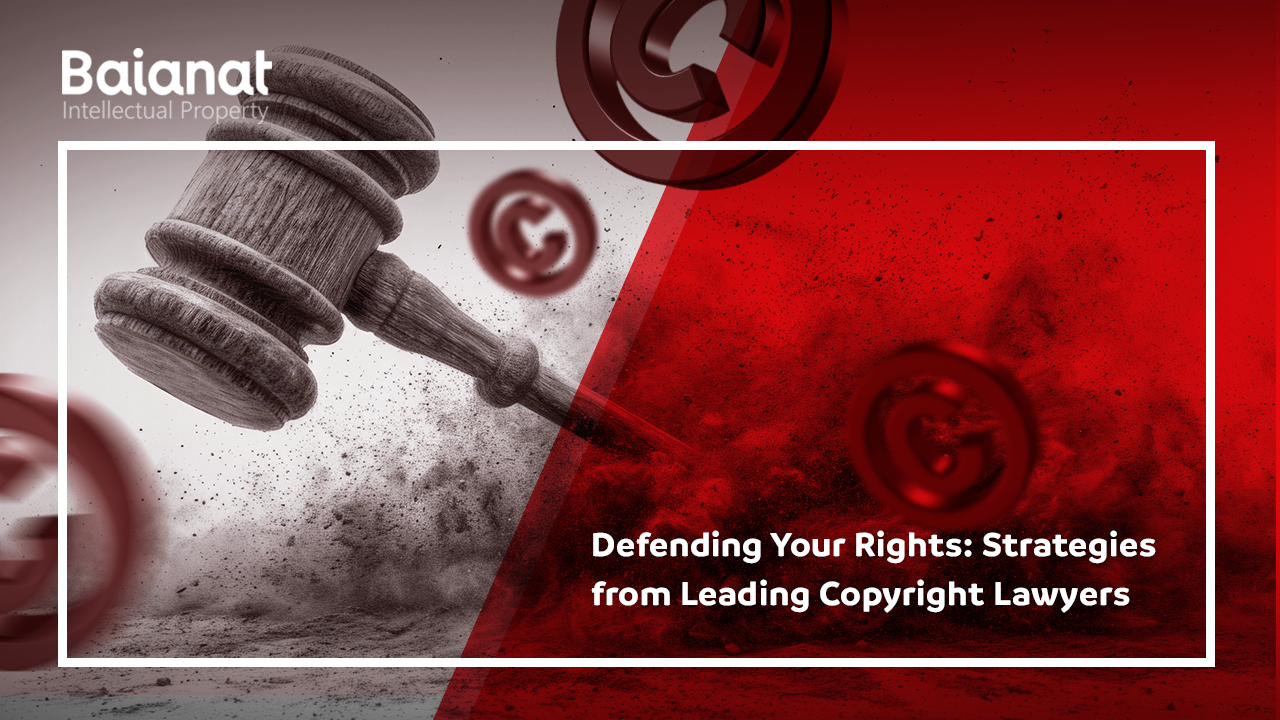In a world dominated by fierce competition, It’s significant for any company to protect its tangible assets so as not to be stolen by other competitors or misused for commercial purposes.
For this reason, Industrial property rights are set for protecting those valuable assets and building up safe environments for innovations and creative ideas to thrive.
In this article, we’ll shed light on the various types of industrial property and its laws. So keep reading,
Industrial property Meaning
One of the definitions of industrial property refers to an intangible asset connected to agriculture, commerce, and industry.
According to the Paris Convention for the Protection of Industrial Property (Article 1 (3)), the term industrial property isn’t just restrained to industry and commerce but also extends to agricultural and extractive industries and to all processed or natural products. I.e, wines, tobacco, fruits, and cattle.
In another definition, industrial property refers to many forms of inventions and industrial designs, which are drawing mimicking the features of an industrial product, i.e, machinery, parts, and tools. Also, It covers much range of types, including trademarks, service marks, patents, commercial names, and protection against unfair competition.
Industrial property can be seen as a subset of intellectual property. Since it’s an intangible asset, it’s prone to be stolen or abused. For this purpose, laws, and rights are forced to give the holder a sort of protection over his creative work
after knowing about industrial property read more on baianat intellectual property
Difference Between The Utility Model And Patent
What are the different types of industrial property?
The industrial property covers generic forms of types; below we’ll explain each in detail.
Patents for inventions
Inventions are broadly defined as a new solution to treat a technical, existing problem. It should not be so complicated because a safety pin is considered an invention since it’s used to fasten pieces of fabric together.
For saving the right of an inventor to which this invention is attributed, patents are set. Simply put, a patent is a right issued by a state that allows inventors to exclude any commercial exploitation of their inventions by anyone for a limited time.
By this exclusive right, a government motivates creators to invent without fear of others misusing their creative works financially by others. Aside from commercial benefits, they are given ever-lasting recognition for their inventions that persist beyond their lives. In return, by this patent, the inventor acknowledges to disclose the patented invention to the public
For granted this patent, the inventor or the entity he works for should submit an application form to the national or regional patent office. In this application, the inventor writes a detailed review of his invention, comparing it with previous inventions for the same problem to show his novelty and uniqueness.
Once receiving the patent, the inventor is called the patentee and anyone who wants to benefit commercially from his invention should obtain his authorization. Otherwise, he commits an illegal act.
In general, four factors should be found in an invention to be patented
- Utility: the invention should be for practical manufacturing
- Novelty: It must have new features and characteristics that aren’t known in the existing knowledge of human record
- Inventive step: It should show a touch of innovation that can’t be known for the average person in the technical field
- Patentable subject matter: Since patent laws vary from one country to another. Many countries don’t grant patents for scientific theories, mathematical methods, discoveries of natural products, or any inventions whose application is harmful to the public good
Utility models
The term Utility models refers to a sort of legal protection for inventions in the mechanical field and it’s widely used in 30 countries around the world, except some countries like Australia and Malaysia where it’s referred to as innovation patent and utility innovations. It’s sought by inventors who have a slightly complex or that commercial usage period is short.
Like patents, the inventor should follow the same procedures when he applies for his application to the receptive body. However, the requirements here are less strict. While novelty is still a main criterion, an innovative step isn’t a must to acquire approval.
The other difference between both is that while the protection period for a patent can extend to as long as 20 years, this period is shorted in the utility model by about 7 to 10 years. Also, the fees paid to receive and maintain this right is lower than that of a patent.
Industrial designs
From a legal perspective, Industrial design is a protected right for the original, visual, and non-functional features of a product. In other words, it’s merely to protect the designer’s creative work.
When looking at customers’ preferences when choosing a product over another, aesthetic appeal can play a major difference. While most of the products produced by manufacturers’ are broadly similar in terms of functionality, their visual appearance differs according to each designer’s imagination.
The rights of industrial design thwart any form of exploitation of design for commercial use without the designer’s permission. By registering industrial designs, the manufacturer keeps a distinct edge over its competitors while the designers are being more incentivized to invest more resources in their creative work.
The term of protection period for industrial design varies from one country to another, but it might go from 15-25 years, often divided into short renewable sub-terms.
Trade mark
Trade mark is a sign or combination of signs that distinguish the company’s product or service over its competitors, and it covers many forms ranging from words, images, colors, symbols, or a collection thereof. You might see the trademark etched in the product your purchase, like the four letters of Nike on the T-shirt, or imprinted on the package or container in which the product is maintained. Also, trademarks are used commonly in advertisements and commercial activities to mark a company’s products.
Other than distinguishing some products from their competitors, trademarks perform three key functions
- Help customers take buying decisions easier by identifying products they’re already familiar with by advertising or any other promotional medium.
- Refer to the quality of a broad range of products covered under the trademark (since the owner might grant the license to use his trademark to other partners, he should care that the licensee’s products rise up to the quality standards trusted by the customers.
- Its acts as a visual appeal that Inspires a feeling of confidence in customers
According to registration limits, Some countries allow for peculiar forms such as three-dimensional such as in the case of the Coca-Cola bottles. However, most countries set strict limits on what’s allowed to be registered as a trademark, generally excluding any which can’t be displayed graphically.
Trade names
Simply, the trade name is the name under which the company is registered, and by which it’s familiar with its customers. For registering a trading name, it should be new or not-used by other players in the sectors for avoiding confusion or misleading customers.
Generally, trade names are maintained and protected as long as it’s demonstrably used.
Geographical indications
Agricultural goods have characteristics influenced by some factors such as climate, soil, and wind in the place where it’s harvested. Due to this reason, geographical indications are pinned on those goods to certify that this product has certain qualities or enjoys a good reputation due to its geographical locations, making it appealing to the end-user. For example, Florida oranges or Indian basmati rice.
Not just agricultural crops that’re limited to geographical indications. They also refer to products of high quality due to human craftsmen found in the place of origin. For example, Turkish textiles, and Swiss watches.
Geographical indications rights are set in the national laws under many terms such as laws against unfair competition or consumer protection laws. Terms criminalize the unauthorized use of geographic indications by imposing sanctions ranging from payment of damages to fines, and in some cases, it might reach imprisonment.
Protection against unfair competition
According to Paris Convention Art. 10bis, unfair competition refers to any act of competition that opposes the honest practices of commercial and industrial matters. Unfair competition promotes choice and ruins the trust between customers and sellers in the market, and they’ve many forms such as
- False advertising: making false claims about the product to trap the customers into buying
- Trademark infringement: stealing the logo or slogans of other competitors to promotes products.
- Bait and switch tactics: promoting a product at a lower price, however when customers visit the store to buy it, they’re told it has been run out of stock and offered with a more expensive product.
- Misappropriation of trade secrets: revealing competitor’s trade secret through a source inside the enterprise then use to get more revenues
The Unfair Competition Prevention Act aims to create a safer climate for any market to thrive by curbing acts of unfair competition and protecting customer’s credibility in all the commercial sectors. According to this act, many acts of unionist acts completions are forbidden such as the unauthorized use of well-known indications, illegal acquisition/use/disclosure of trade secrets, and goods, illegal use of domain names, and promoting inappropriate and false information about a competitor.
Industrial property rights vs intellectual property (150)
As we mentioned before, Intellectual property is branched into two main types: copyrights and industrial property, so industrial property can be seen as a branch or a large tree called intellectual property. However, there are slight differences in some terms between both, as we’ll show in the table blow
| intellectual property | Industrial property | |
| Definition | Protect all types of intangible assets whether it’s literary and artistic works of all types novels, songs, poems, articles, drawings, paintings, sculptures, etc., or commercial such as trademarks and patents. | Protecting only types of industrial, commercial, or agricultural nature such as trademarks, patents, utility models, geographical indications |
| When rights acquired | When creating the work | When registering in the patent or trademark offices or the receptive authorities in each country |
| Registration | Registration isn’t obligatory. However, it’s proof of evidence that protects the author’s financial and moral rights in every future conflict that can arise regarding the ownership of the work.
|
By registration, the holder is given an exclusive right for manufacturing the product, expansion, and trade |
| Where to register | In the national and digital registers | Patent and trademark offices |
Examples of industrial property rights
Industrial property rights allow the holder an exclusive right over his property that prevents other parties from stealing, using or benefitting from it by any form. The most important industrial property rights are patents, utility models, trademarks, and industrial designs
after knowing about industrial property read more on baianat intellectual property
Author Copyright Agreement Inderscience
How to avoid patent infringement

Are You Searching For The Best Intellectual Property Lawyer around you
Industrial property law
Laws of industrial property can vary from one country to another with the top 5 countries for IP rights according to the index being Finland, Switzerland, Singapore, New Zealand, and Japan. In this article, we’ll suffice with highlighting some of the industrial property laws in KSA, as an example.
For registering a patent for any invention, it should be novel, includes an innovative step, and have industrial applicability. Also, it should be aligned with Islamic sharia and eco-friendly.
- As for the patent, it is registered after verifying its uniqueness by the Saudi Authority for Intellectual Property website and paying the required payment to obtain a certificate of ownership.
- According to Article 34 of the Patents, Industrial Designs, Layout Designs of Integrated Circuits, the penalty for any violation of the right is to pay a fair compensation or a fine whose maximum is 100,000 Saudi riyals and double the maximum limit upon recurrence, or refer the infringer to the Board of Grievances in the event his crime requires imprisonment.
- The required fee for applying a trademark for registration by the receptive authority is 1,000 riyals to affirm its consistency with the criteria required, in addition to the fees for publishing it, which is 500 riyals, and the fees for registering the trademark and issuing the certificate are 5,000 Saudi riyals.
As for counterfeiting or copying the trademark, it shall be punished in accordance with Article 43 with imprisonment for a maximum of one year and a fine of a minimum of 50,000 riyals and a maximum of 1 million riyals, or imposing one of the two penalties
Baianat intellectual property, How we can help you?
Baianat Intellectual Property has extensive experience and a long history in the field of intellectual property. Now, our firm is operating in the Middle East and North Africa via more than 25 offices in more than 15 different countries
Establishing companies on solid and legal grounds is our goal to help your company thrive and sustain safely. So we offer you many services in registering, renewing, and monitoring all types of industrial properties, including patents, utility models and industrial designs, integrated circuits, and trademarks.
after knowing about industrial property read more on baianat intellectual property
intellectual property portfolio management









